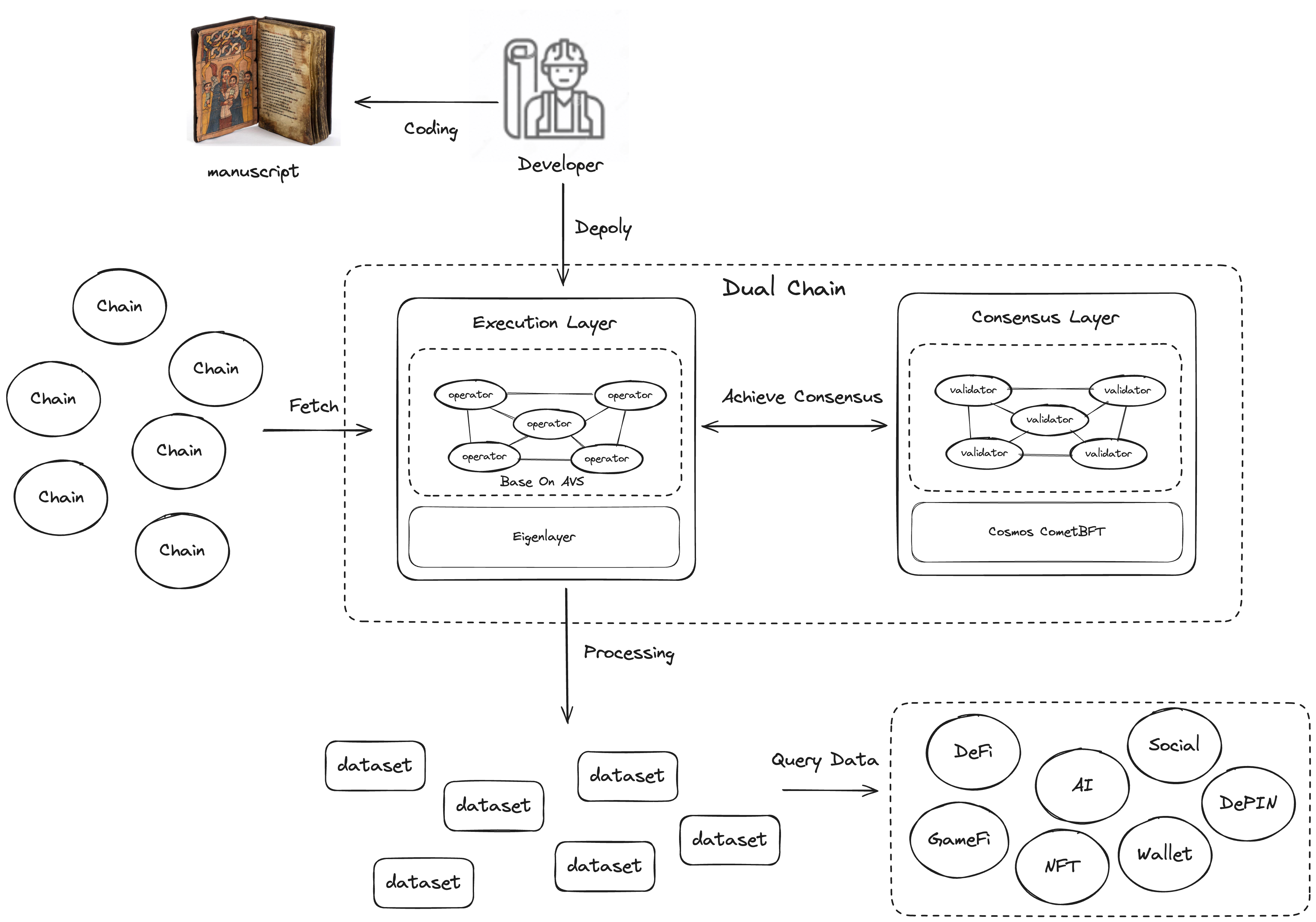Skip to main contentConsensus Layer + Execution Layer
 Chainbase introduces an innovative dual-chain architecture that enhances the programmability and composability of cross-chain data, supporting high throughput, low latency, and finality. This architecture achieves higher network security through a dual staking model.
Chainbase introduces an innovative dual-chain architecture that enhances the programmability and composability of cross-chain data, supporting high throughput, low latency, and finality. This architecture achieves higher network security through a dual staking model.
What Does the Dual-Chain Architecture Bring?
- Performance Optimization: As the largest distributed data engine of the future, it needs to support high-throughput data processing. The CVM in the Execution Layer supports parallel computing capabilities, while the Consensus Layer utilizes CometBFT optimized for performance.
- Programmability: Manuscripts define the standard schema that different data sources need to follow when converting into datasets. The redesigned Execution Layer provides a runtime environment for these Manuscripts.
- Composability: The redesigned Execution Layer can handle data streams from multiple sources for joint processing. For example, aggregating data sources from various chain lending protocols can create a universal lending rate.
- Enhanced Crypto-Economic Security: Traditional public chain projects often compromise security to optimize performance and compatibility. By introducing the dual-chain architecture of Eigenlayer and Cosmos, Chainbase incorporates a dual staking model, ensuring game-theoretic security for the hyperdata network.
Consensus Layer
The Consensus Layer ensures data and state consistency among all nodes in the network. Its main advantages include:
- Instant Finality: Using CometBFT, once data is processed and included in a block, it is considered final visible data without the need for additional confirmations or data reorganization.
- Proven Robustness: CometBFT is battle-tested and has successfully protected billions of dollars across various blockchain networks, proving its robustness and reliability.
Execution Layer
The Execution Layer excels in large-scale data processing and complex data transformation tasks. Its main advantages include:
- Parallelization: Through data parallelism and task parallelism, the Execution Layer can handle large-scale data, enhancing overall performance and throughput.
- Decentralized Environment Based on Eigenlayer AVS: The introduction of Eigenlayer not only enhances the system’s decentralization but also provides additional economic security, balancing high performance and high security in the Execution Layer.
- Programmable Runtime Environment: By providing a powerful computational logic execution environment, the Execution Layer offers developers an efficient and flexible platform that supports complex data processing tasks and application scenarios.
Conclusion
Through its innovative dual-chain architecture, Chainbase successfully combines the advantages of the Consensus Layer and the Execution Layer to achieve high performance, low latency, and finality. This architecture not only enhances the network’s programmability and composability but also provides higher economic security through a dual staking model. With instant transaction finality and proven robustness, Chainbase sets new standards in blockchain performance and interoperability, providing a solid foundation for data processing and applications in the AI era. 